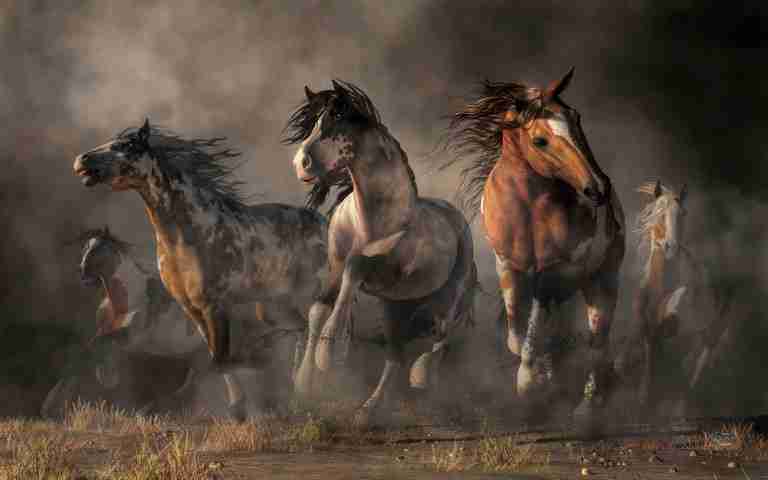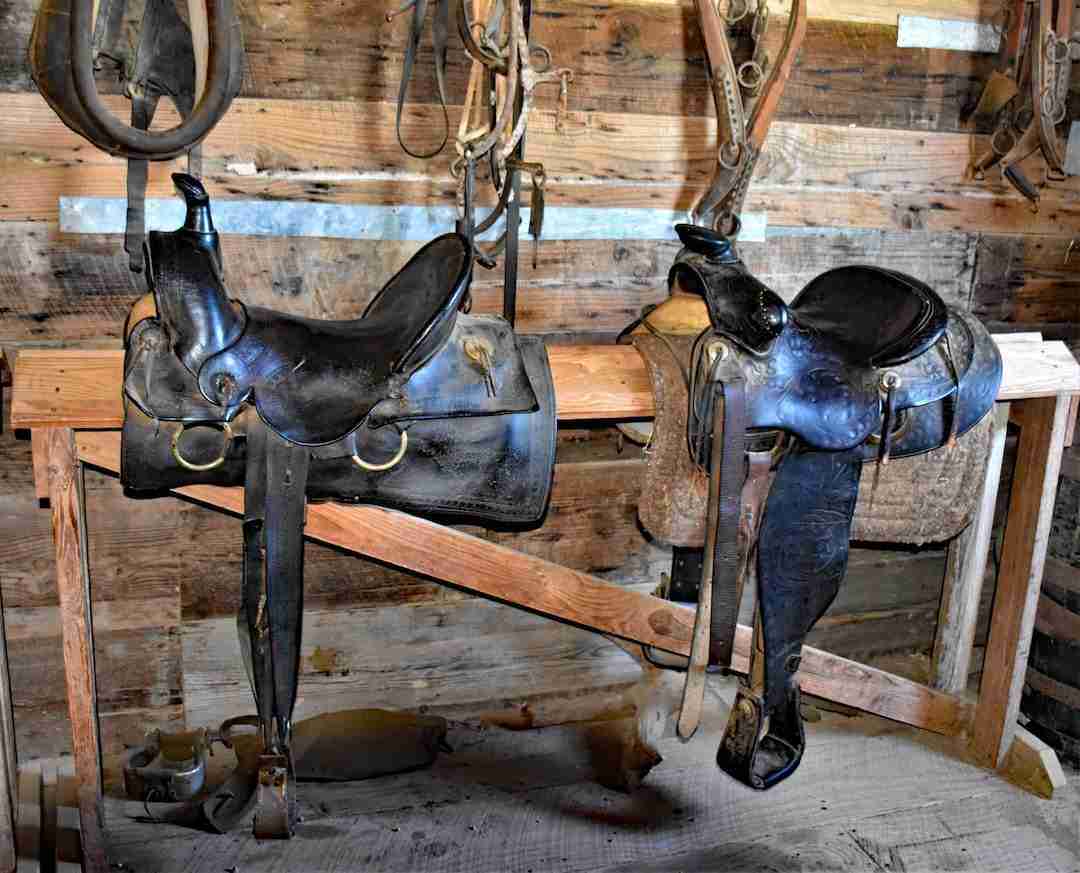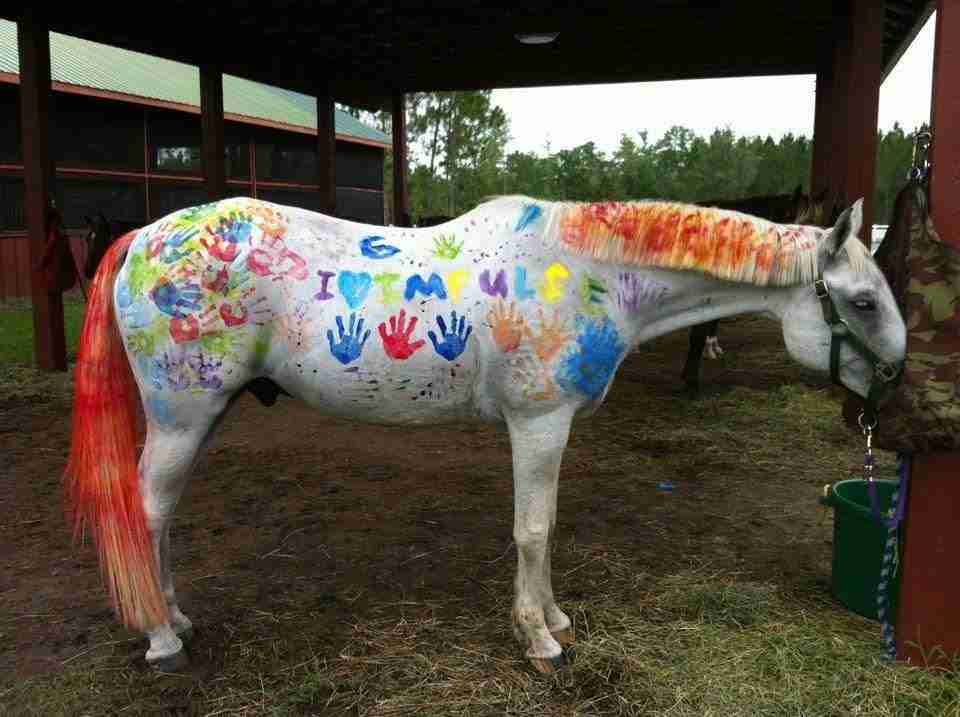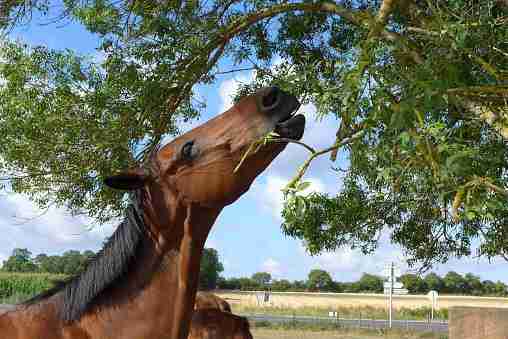American paint horse is a beloved breed. Not only are these animals wonderful companions, but they are intelligent, easy to train, hard-working, and able to compete in various events should you be so inclined. Named for its distinctive color patterns, the American Paint horse is an all-rounder most owners enjoy having.
American Paint Horses were introduced to North America by the Spanish. They were mixed with thoroughbreds and kept by cowboys and Native Americans. Registered Paint Horses have the body of a Western Stock Horse with a patterned coat. They must have Thoroughbred or Quarter in their lineage.
If you would like to find out a little more about the American Paint Horse, read on. We cover the history, characteristics, care needs, registration, benefits of being registered with the APHA, and uses of this stunning horse. We uncover what makes American Paint Horses so intriguing and sought after.
American Paint Horse History
The American Paint Horse was first introduced to North America in the 1500s. The Spanish brought their horses with them on their journey, and it is thought that Hernando Cortez was the one responsible for introducing the American Paint Horse to the locals of Northern America.
Cowboys and Native Americans were blown away by the animals. It was the very first time they had seen horses with such distinctive coloring. Add to the characteristic look, agility, sturdiness, and speed, and you have what seems like the perfect horse.
The locals called the Spanish Paint Horses “Painted Ponies,” although the Spanish referred to them as “Pintados .” The term “Pintados” means a multi-colored horse. Although Paint Horses technically fall under the blanket term, “Pintos” and “Paints” are two different things.

The Painted Ponies brought in by the Spanish became part of the wild horses of the Western plains. They were mixed with Thoroughbreds brought in by English settlers. The mix created a hard-working horse that was good-natured, sturdy on the trail, had good stamina, and a friendly disposition. It was also intelligent and easy to train.
Native Americans fell in love with the breed and started acquiring them in great numbers. They would raid camps and collect Paint Horses for use in hunting and battle. The “Painted Ponies” allowed them to hunt more efficiently, and they soon attributed their strengths to magical powers.
Some Paint Horses have markings on their heads that look incredibly similar to Native American Medicine Hats. Those horses, in particular, were thought to protect Native Americans from death or injury in conflict.
The same attributes that made the Paint Horse sought after by Native Americans made them attractive to cowboys too. The Paint Horse became a staple in herding and on the trail, and its friendly temperament made it a lovely companion. It was also fast. Having a sturdy horse that could outrun cattle and predators sometimes meant the difference between success or failure for cowboys.
American Paint Horse Characteristics
The American Paint Horse may be best known for its characteristic patterns, but there is more to classifying a Paint Horse than its distinctive spots.
American Paint Horses typically reach around 14 to 16 HH. Those with Thoroughbred ancestors are even taller than that.
These horses are stocky, muscular horses with sturdy hindquarters, broad chests, and low centers of gravity. The low center of gravity makes them great trail horses, as they can maintain their balance even in tricky situations.
American Paint Horses are heavier than most other horse breeds. They range between 950 to 1,200 pounds. Although these horses are heavy, they are quick and agile. They can reach speeds of about 60 miles per hour.
Something that is possibly surprising is that the underlying color of a Paint Horse is white. Other colors present can be seen on the skin under the coat, even if the different color is light and fades to white over time.
The colors we typically find in addition to white on an American Paint Horse include:
- Black
- Chestnut
- Palomino
- Chestnut
The patterns of an American Paint Horse come in several varieties. The most common types include:
- Tobiano
- Avero
- Tovero
- Sabino
- Medicine Hat
- Splashed White
Let us consider each of these in some detail.
Tobiano Paint Horse Pattern
The Tobiano pattern is one of the three main ones found on American Paint Horses. This pattern includes white splashes up the legs and over the back. The white color can be on all four legs or only two and is on the bottom half of the legs.
The head typically sports a star, splash, blaze, or some other distinct shape of color. Their tails and manes have two colors, creating a striking effect.

Overo Paint Horse Pattern
This pattern is another of the three main designs found on American Paint Horses. The Overo is the reverse of a Tobiano. The white color is present on the belly but not on the back of the horse.
The color is typically on all four legs, and the colors join in an irregular border of mixed colors.
A unique feature of Overo horses is that one or both of their eyes are blue. Their heads are typically white and can be bald, apron, or bonnet-faced.
Tovero Paint Horse Pattern
Tovero is the last of the three main patterns we find on American Paint Horses. This pattern combines Overo and Tobiano’s attributes. Colors can show on the face, chest, or flank in differing combinations.
Sabiano Paint Horse Pattern
Horses with a Sabiano pattern are typically primarily white. You may find color on their ears, tail, or chest. Their base coat is mixed with white, so their overall appearance is white.
Medicine Hat Paint Horse Pattern
We mentioned earlier that Native Americans were intrigued by Paint Horses. Horses sporting Medicine Hat markings were thought to possess great magical powers. Native Americans believed these horses gave them protection from harm in battle.
The pattern of a Medicine Hat is almost entirely white. There is typically a little color on the ear and on top of the head, giving it the appearance of a hat.
These horses can also boast spots of color on their chests and shields and often have pink muzzles.
Splashed White Paint Horse Pattern
This variety tends to have one half of the body in one color and the other half a different color. If the head and top half of the body are dark, the legs and bottom half of the body are white. The opposite is also found.
Some Splashed White Paint Horses have white heads and blue eyes.
Caring For An American Paint Horse
American Paint Horses were once wild, running on the plains of the West. Although they have been mixed since then, they remain a hardy horse that is not too needy or sensitive.
Feeding An American Paint Horse
Feed your American Paint Horse as you would other domestic horses. They enjoy a diet of primarily grasses, but you can add grains, barley, soybeans, alfalfa, oats, corn, flax, clover, wheat, and other foods typical to domestic horses. Always provide your Paint Horse access to clean, fresh water.
Be cautious not to overfeed your American Paint Horse. This breed has a tendency to become overweight. Although they do not need much exercise to stay in shape, it is vital that they do.
According to an informative article by the American Association of Equine Practitioners, Paint Horses that become overweight could suffer from related health issues, including the following:
- An increased stress on the heart and lungs
- The risk of illnesses, laminitis, or founder
- A greater risk of developmental bone and joint problems in young and growing horses
- Joint, limb, and foot strain
- Increased symptoms for those that already suffer from Arthritis
- A less efficient body temperature regulation
- Abnormal function of organs because of fat build-up around vital organs
- A reduced ability to reproduce naturally
- The horse may be more easily fatigued and have increased lethargy
To avoid having your American Paint Horse develop obesity, it is advisable to regulate how much you feed it and provide regular, frequent exercise. It can be tempting to overfeed horses since they enjoy eating, and it is a time of bonding for the horse and owner, but it is advisable to err on the side of caution with feeding.
Other Articles You Also Be Interested In
- Can Horses Eat Corn On The Cob?
- How Does A Horse Crow Hop?
- Styles of Horse Reins and How To Use Them
- The Western Horse Saddle Parts Explained
- Can Horses Swim, Sink or Float?
When it comes to monitoring your horse’s condition, there are a few categories that vets use, and you can use these to assess how your horse is faring. Based on your judgment, you can make adjustments where necessary.
You can score your horse based on appearance and feel in the following areas:
- Neck
- Withers
- Along the top of the back
- Tailhead
- Ribs
- At the girth of the shoulder
The score is from one to nine, with one being too thin and nine being morbidly obese. It is ideal to keep your American Paint Horse around the five to six scores as that means they are moderately fleshy and likely in good health.
Socializing An American Paint Horse
American Paint Horses, like most horses, enjoy being in a herd. Horses are naturally sociable and interact well with each other.
American Paint horses need ample space to run and graze; however, they also do well in a stable when necessary.
This breed of horse is friendly and gentle with humans, too. They make great companions, are easy to train, and are beautiful horses for beginner riders and owners wanting to adapt to the lifestyle of having horses.
American Paint Horse Shelter Requirements
American Paint Horses enjoy life in pasture; however, they need shelter from the elements. Provide a stable or covering of some kind to protect your Paint Horse from rain, sun, cold, and wind, just as you would any other breed of domesticated horse.
American Paint Horse Organization And Registration
The American Paint Horse Association, or APHA, is responsible for registering Paint Horses and provides multiple benefits to owners. By participating in various programs, owners can increase the value of their horses and enrich the experience of owning one or more of these beautiful creatures.
To qualify for registration as an American Paint Horse, the horse’s bloodline must include Thoroughbred or Quarter Horse lineage. At least one parent must be registered as an official American Paint Horse.
The stringent confirmation standards go beyond the color of the horse. Criteria that the horse should adhere to include:
- Intelligence
- Athletic ability
- Athletic performance
- A calm temperament
- A willing disposition
- A qualifying area of white on a dark horse
- A qualifying area of dark on a white horse
Before breeding, the APHA requires that both the mare and stallion be tested for the five-panel genetic diseases. Should testing not be done, the foals born to the pair will not be eligible for registration.
Only the main types of color combinations are acceptable for registration. They include:
- Tobiano
- Overo
- Frame
- Sabino
- Splashed White
- Tovero
- Solid
Registered American Paint Horses should conform to the stock horse build of the Quarter Horse.

Benefits Of The American Paint Horse Association
In addition to having your American Paint Horse registered, the APHA offers members benefits to enrich their ownership. Various programs are run, and you can subscribe to “Paint Horse Journal” and “Paint Horse Racing” to learn more about your horse.
Programs run by the APHA include:
- American Junior Paint Horse Association
- American Paint Horse Foundation
- Amateur Program
- Trail and Recreational Riding
- Professional Horsemen
- Paint Alternative Competition
- Racing
- Ride America
- Youth World Championship Show
- Open/Amateur World Championship Show
- Breeders’ Trust and Breeders’ Futurity
Benefits of being a registered member of the American Paint Horse Association include:
- Receiving preferred member rates for APHA transactions
- Free quarterly publications and an e-newsletter
- Enjoying discounted rates on “Paint Horse Journal” subscriptions and advertising
- Savings and discounts on items offered by corporate sponsors
- Eligibility to vote in Association elections
- Eligibility to serve on the committee
- Eligibility to hold office for APHA
- Access to online information
- Access to online education
- Access to online reports
When you are registered with the Association, you are given access to a great deal of information and are part of a caring group of like-minded horse owners and carers. It is a helpful resource with ongoing and current events, assistance, and multiple offers.
American Paint Horse Uses
The American Paint Horse has long been adored for many reasons, including its athleticism, agility, stamina, sturdy build, low center of gravity, and friendly nature.
When considering the uses of an American Paint Horse, many come to mind since these horses enjoy a muscular build while also being quick.
In the past, Native Americans rode American Paint Horses, or “Painted Ponies,” in battle and when hunting. They believed the horse had magical powers and could protect them from harm in battle.
Through the use of the American Paint Horse, the Native American became a mighty hunter, able to catch and keep up with Bison and other fast animals.
Cowboys used the American Paint horse for herding and traveling. The Paint Horse has good balance because of its low center of gravity, and the animal’s stamina means it can be pushed further than other horses.
Today, American Paint Horses are used for a variety of purposes. In terms of performance, you might see a Paint Horse barrel racing and jumping at a show, working cattle, traveling cross-country, trail-riding, assisting in combined driving, and even more.
American Paint Horses do well in English and American show rings and excel on the ranch and the trail. Their diverse nature makes them a true asset for any owner.
If you are looking for an excellent horse for a beginner, the American Paint Horse is likely a good fit for you. These horses are calm, friendly, easy-going, and learn quickly. They are a fantastic starter horse for a new rider and anyone wanting to begin the lifestyle of owning and caring for horses.
American Paint Horses also make good horses for children. Because they are docile and intelligent, they are easy to train and make excellent companions. They are generally well-balanced and offer a reliable ride and friend to children and adults alike.
Although American Paint Horses can be used for events and competitions, they are also fantastic for pleasure riding, racing, and even rodeos. Be sure to train your American Paint Horse well and provide enough food, water, and exercise to keep it in optimum condition.

Conclusion
The American Paint Horse is said to be one of the friendliest and most intelligent horses. Mixed with Thoroughbred and Quarter Horse, these reliable horses are an excellent combination of strength, stamina, intelligence, speed, balance, and agility.
Their easy-going nature makes them excellent companions, and because they are intelligent, they are easy to train and well-balanced for use with beginners or children. These horses do well in stables and pasture and require relatively little in terms of additional care. In order for Paint Horses to be registered, they must fulfill the stringent criteria as stipulated by the American Paint Horse Association.
Resources
- https://en.wikipedia.org/wiki/American_Paint_Horse
- https://www.thesprucepets.com/meet-the-paint-horse-1886129
- https://animal-world.com/horses/Light-Horse-Breeds/PaintHorse.php
- https://www.stoneyhollowpaints.com/horse-sense/2019/1/1/the-painted-ponies-of-the-american-west
- https://aaep.org/horsehealth/overweight-horse









